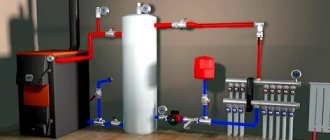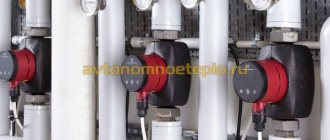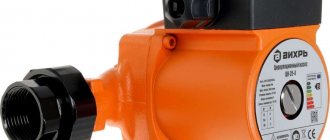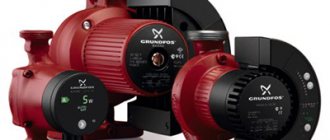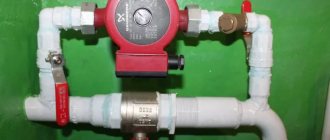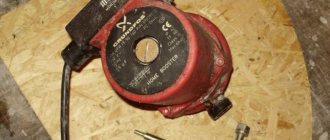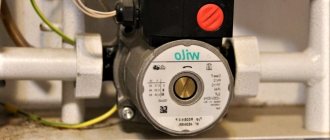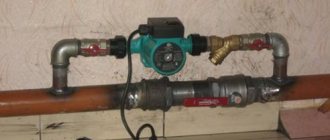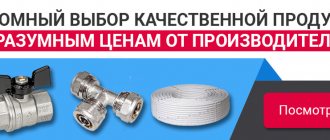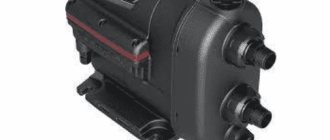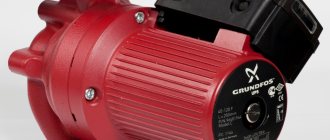How to purchase spare parts for a Grundfos pump
When purchasing pumping equipment for home water supply, sewerage, heating or drainage systems, each buyer first of all tries to find out how long the manufacturer’s warranty is given and how its maintenance is generally carried out. This also applies to the products of such well-known world brands as Grundfos - after all, as we know, there are no mechanisms that never break.
In this article we will tell you what accessories and spare parts can be purchased from dealers and what warranty services offer Grundfos pumps today.
Grundfos brand pumps
Before we talk about where to buy spare parts for Grundfos pumps and how their maintenance is carried out, let's say a few words about the manufacturer. This brand belongs to a Danish company of the same name, which was founded in the middle of the last century.
So:
- They were the first in many ways. These include fundamentally new design solutions, standardization of certain components in pumps, the use of titanium for the manufacture of quickly wearing parts, as well as automatic regulation of network operation. It was Grundfos that created the DDD system, which makes it possible to avoid regulating pressure in pipelines using valves.
- Thanks to the use of permanent magnets, the products of this manufacturer break all records in both energy efficiency and efficiency indicators. So the higher price of Grundfos pumps is compensated for quite quickly due to economical energy consumption.
- If you want to learn more about the innovations of this company, just type “grundfos pump official website” in the search bar. Of course, not all of their products present on the Russian pumping equipment market are manufactured in Denmark. Grundfos factories are located in most European countries, as well as in all major countries, including China.
Grundfos industrial pumps
- We have such an enterprise in the Moscow region, but not the entire range of products is produced there. These are mainly drainage and sewerage units, booster pumping stations, fire extinguishing installations, as well as control systems. As for household pumps for wells and wells, domestic stores most often sell products originating from Germany or China.
Their sales and service in Russia are carried out by dealer enterprises. There are dealers of Grundfos pumps in all major cities and regional centers of the country.
In order not to run into a fake, you should purchase equipment and spare parts for pumping stations from them. Moreover, you can order absolutely any part: from the oil seal to the engine.
Brief overview of our products
Among the types of equipment produced by Grundfos, there are at least fifteen categories. These are household and industrial pumps for pumping various types of liquids; circulation equipment for heating systems; sewerage installations; dosing and booster pumps; drainage and mud aggregates; automatic membrane tanks, and various components. As you can see: there is something to discuss.
To make it easier to perceive the information, we will offer you an overview in the form of a table:
| Equipment category | Pump series and their features |
| For installation in wells, two series of pumps are offered: SPO and SB. Their main difference is the design of the case. The SPO has a stainless steel body, while the SB has a plastic body. Each series has several options with different performance characteristics.
The Grundfos pump passport provides complete information about the capabilities of the mechanism, the rules of its operation and maintenance. In addition, the manufacturer’s recommendations and a visual connection diagram make it possible to install the pump in the well yourself. |
| The Grundfos line of downhole equipment includes series such as three-inch SQ pumps; SQE; SQ-N and four-inch SP. Basically, they are distinguished by different types of engines. All over the world, these pumps are appreciated for their optimal diameter and light weight ratio. They are used not only for supplying water from wells, but also for irrigation systems and pumping into reservoirs.
For example, pumps of the SQE series have additional equipment in the form of automation with remote control and a frequency converter. Some models are even equipped with a one-piece power cable with a length of 40 to 80 m, installed without a coupling.
|
| This category includes domestic water supply stations of the MQ, JP Basic, Hydrojet JP series, ejector pumps, and self-priming pumps for swimming pools. Pumping stations are compact, fully equipped with connecting fittings and instrumentation.
Depending on the modification, the pressure developed by the pump is 40-48 m, the flow rate is 3 and 4.5 m3/hour. Considering that MQ stations can only obtain water from a depth of 9 m, then for pumps equipped with an ejector from the JP series, 20 m is not the limit. In addition, they are able to work with heated water.
|
| Among the range of fecal equipment are pumping units of the Sololift and Multilift series, designed for collecting and discharging wastewater of varying degrees of contamination. The permissible size of solid particles for these pumps does not exceed 7 cm. They are used not only in everyday life, but also in office buildings, baths and saunas, beauty salons, various medical institutions, etc.
In addition, the manufacturer offers grinder pumps SEG and APG, as well as single-channel pumps SE and vortex pumps SEV. They are designed not only for pumping liquid waste, but also for processing masses with fibrous and solid inclusions up to 10 cm in size. Such pumps have a cast iron body and are very durable - they can easily start and stop up to 20 times within an hour. |
| This category of pumping equipment is perhaps the most extensive in terms of assortment - it includes 9 series. Grundfos UPS and UPSD (twin) pumps have gained the greatest popularity among domestic consumers.
Some models are equipped with threaded connections, others - with an air separator. There are also pumps that can work not only with hot water, but also with liquids that have a negative temperature. What is very convenient, UPS pumps are equipped with three-speed switches.
|
| The list of drainage pumps also includes several series, with different designs of motors and impellers, power characteristics and housing options. Unilift KP pumps are models for domestic use that can be used to pump water from a flooded basement, pump it from a natural reservoir, or lower the water level.
While Unilift KP are semi-submersible, the DP series pumps operate while completely submerged in water. They are used for draining pits and flooded mines. The operating instructions for each model provide the consumer with comprehensive information about the capabilities of the pump and its application. |
| The Grundfos brand also offers automatic fire extinguishing systems of the Hydro MX1 and MX2 series, as well as Solo FS jockey pumps. The units are very effective in fighting fire and can function for a long time, until the fire source is completely eliminated. There are models designed for deluge systems, and there are pumps for sprinkler systems that are triggered by a signal from a pressure sensor.
|
| A fairly large group of single-stage pumps belongs to the TP and TPD series with in-line pipes. They are used in domestic and industrial water supply, air conditioning, ventilation and heating systems. They are unpretentious, economical and very diverse in parameters.
The multi-stage Grundfos CR series pumps, which you see in the photo on the left, have gained particular popularity. This is a huge range of pumps, with power from 0.37 to 75 kW. They are used everywhere, from irrigation systems to fire-fighting and industrial water supply systems. |
Manufacturer's warranty
The passport for the Grundfos pump is the main document, which clearly states all the characteristics of the pump, diagrams of its installation and safe connection, and warranty periods. And by the way, they are not the same for different types of equipment.
- For example, well, sewer or drainage models (see Drainage pump: use and application) are guaranteed for two years. The operation of the circulation pumps of the MAGNA and UPS series, which you see in the title photo, is guaranteed for three years. And the longest warranty period for pumps under the ALPHA brand is five years. The total service life of pumping equipment, determined by a given manufacturer, is ten years.
Grundfos pumps instructions
- The warranty period for the pump, as is practiced everywhere, is counted from the moment of its sale. But, if it was installed by service center specialists, which is confirmed by the relevant act, then the warranty begins from the day the equipment is put into operation.
- If the pump has undergone warranty repair, then its period: from the date of delivery to the service center until the date of delivery to the client is added to the total warranty period. What are the service center representatives required to do if the repairs were carried out after the warranty period for the unit itself had expired?
Note! You are required to provide at least 12 months of warranty for spare parts for Grundfos pumps replaced during out-of-warranty service.
- Therefore, upon completion of the repair, the consumer must be provided with documentation: a Grundfos pump, with a detailed description of the actions performed and confirmation of the fact that a particular part has been replaced. With a valid warranty, repairs are made free of charge, and replacement components are not issued to the client. Costs associated with dismantling and reinstalling the pump are not reimbursed to the consumer.
- It must be borne in mind that if the equipment malfunction occurs as a result of gross violations committed during installation and connection to the electrical network, mechanical impact, or after opening the pump housing with your own hands, you cannot count on warranty repairs.
To avoid misunderstandings, when purchasing equipment and issuing it after repair, make sure that the warranty card, as well as the service protocol, are filled out properly: user data, signatures and seals, date. The video in this article will help you understand the documentation for Grundfos pumps.
Step-by-step DIY installation instructions
In order for the unit to effectively perform its task, it should be installed on a horizontal plane. Equipment with a wet rotor is placed on the supply circuit, and equipment with a dry rotor is installed on the return circuit. The fact is that the “dry” version uses rubber or paronite gaskets, which deteriorate quite quickly when exposed to high temperatures.
It is advisable that a coarse filter be installed in front of the heating pump. It is necessary to protect equipment from small impurities entering it. This will extend the service life of the equipment.
It happens that electricity is cut off in the area where equipment is installed. In order for the pump to operate continuously, it is necessary to additionally install a bypass.
Some users cannot determine the correct direction of the pipes during installation. The manufacturer took this feature into account, so on the body of the pressure equipment you can see an arrow showing in which direction the rotor, and therefore the coolant, rotates.
As a rule, circulation equipment is sold without fasteners, so they will have to be purchased separately. When connecting the device to the network, professionals recommend using a separate cable coming from the distribution panel.
Main stages of work:
- All liquid is drained from the heating circuit. If it has been in use for a long time, high-quality washing is recommended.
- To connect equipment, bypass sections are cut in. A bypass is installed between the taps, which should complement the check valve or ball valve. This will protect the plastic liners during the welding process.
- The bypass pipeline is equipped with shut-off valves.
- A coarse filter is installed.
- A Mayevsky tap or automatic air valve is installed in the upper part of the bypass.
- The pump crashes. If the model is equipped with a “wet” rotor, then it should be placed horizontally.
- To connect to the network, it is better to use a separate grounded outlet.
- The pump is filled with coolant and its performance is checked.
At first glance, it seems that installation is not difficult. But this is only for experienced users. In practice, various problems may occur, so it is recommended that you carefully study the instructions supplied with the equipment. If experience is not enough, it is best to invite a specialist who will take into account all the requirements and configure the unit correctly. Read about long-burning wood-burning stoves on our website.
Some tips on how not to buy a fake
We all know that for any product popular among the people, there is an analogue, which, in fact, is a fake. Naturally, this fate did not spare Grundfos pumps either. How do you know when purchasing that this is an original?
Dye
First of all, you need to pay attention to the quality of the paintwork. High-quality paint is expensive, and increasing the cost of counterfeits is not part of the plans of their organizers.
Therefore, it is enough to pick at the paint on fakes with your fingernail, and it will come off from the base. The factory coating is very durable, and even if the device is mechanically damaged, the paint does not peel off.
Serial number
In original factory-made pumps, the serial number is not written in marker or stamped, but is stamped on the body. The last three digits usually correspond to the length of the wafer connection - find this parameter in the passport and compare.
Serial number on the pump body
Each pump must have its own number, and if you see the same number on different pumps, you can safely refuse the purchase. In addition, the main parameters of the pump are applied to the front of the housing using laser engraving. Nothing should be written by hand!
Visually identifying a fake is not always so easy. But even the fastenings on the box can give it away. In the original these should be screws, but in counterfeit ones there are often ordinary self-tapping screws.
So be careful, or better yet, purchase a pump only at a dealership. And then you will definitely have nothing to worry about.
Basic markings
Circulation units are usually marked as UP?? XX-XX. where instead of X there are numbers, and instead of “?” - letters (however, the latter is not necessary, it all depends on the purpose of the pump). Let's look at the main markings using the example of UP SD 25-40 F:
- UP – pump type (circulation);
- S - there is a three-speed switch;
- D – paired, that is, two pumps located on opposite sides of the pipeline simultaneously pump through one pipe;
- 25 is the diameter of the connection of the system pipelines to the pump, expressed in millimeters. The standard range comes with diameters of 25, 32 and 40 mm.
- 40 – power expressed in the height of the liquid column. The height is written in decimeters, that is, to convert to meters, you need to divide by 10: 40 = 4 m;
- F – flange connection of the pipeline to the pump. If this index is missing, then the pipes are connected using pipe threads.
Pump control
In addition to the pump units themselves and spare parts for them, various auxiliary equipment is also offered to the consumer. These are frequency converters of various powers, starting protection devices, modules for dispatch systems, stationary panels and remote controls.
- All this is also produced in various versions, which allows for an ideal selection of them for a particular pump model. This is especially true for control cabinets, because not one, but several pumps can be connected to them. All this is taken into account in their design; the type of connections also matters: direct connection or star-delta connection.
Grundfos pump control cabinet
Cabinet LC 108
For example, a cabinet marked LC 108 is designed to control a pumping station that supplies water from a tank, or one pump integrated into an autonomous water supply system. It is equipped with a built-in buzzer, and in case of an emergency it can sound a sound signal.
The cabinet is made of non-flammable engineering polymer and is produced in several modifications to control pumps of different power (cv/ Submersible pump control station: equipment for autonomous and main communications). Accordingly, the dimensions of the shield can also be different.
Selection options
If the Grundfos pump is considered as a supply pump (to replenish coolant losses and fill the system), then its main parameter is considered to be performance. Usually it is taken at the rate of 0.5% of the volume of the entire system.
But if the water device will work as a full-fledged circulation pump, then the choice should be stricter.
Power
This parameter shows how much volume the device pumps per unit of time. The choice depends on the heating power. It is better to take a pump with a small power reserve (but without fanaticism - a 10% capacity reserve is enough), since at modes close to the maximum, the noise level may be exceeded. As a rule, the factory settings correspond to the lowest noise level.
Pressure
The pressure depends on the resistance of the system to dynamic pressure and the number of floors of the heated room. The more turns and control valves, the higher the performance should be.
The maximum pressure depends on the characteristics of the system. Static pressure in open systems is determined by the height of the expansion tank, in closed systems - by the pressure membrane.
Speed and noise
In addition to these parameters, you can pay attention to the additional options of the latest models of the concern. For example, a pump with a three-position speed switch allows you to adapt the operation to the needs of the system and save on energy consumption (when compared with single-speed models)
For example, a pump with a three-position speed switch allows you to adapt the operation to the needs of the system and save on energy consumption (when compared with single-speed models).
But modern developments with electronic regulators are able to adapt so clearly to the conditions and needs of the heating system that they reduce energy consumption by 2–5 times. Not to mention reducing noise.
You need to know the following about noise: models with a dry rotor are noticeably noisier. Pumps with a wet rotor are practically inaudible during operation. But if their power exceeds the needs of the system or they work at the limit, the noise increases. And noise also means there is air in the system.
Reference! The latest Grundfos models are an excellent alternative to outdated pumps from other brands - they consume less energy and are noticeably quieter.
